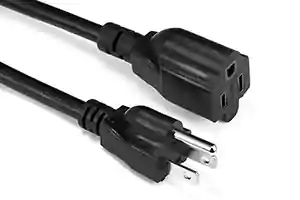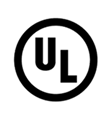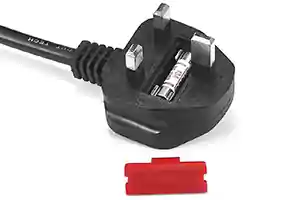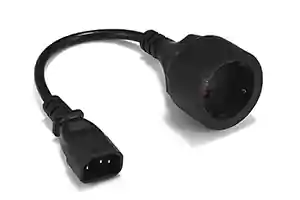In this article, we will take you to understand power cord types; power cords are too common in our daily life, but do you really understand power cord types?
The power cord consists of a “power cord” and an “interconnected power cord,” one end of which is a “power plug” and the other is a “connector. One end of the power cord is the “power plug,” and the other end is the “connector,” and one end of the “interconnected power cord” is the “connector” and the other end is the “plug.” The “power plug” of the “power cord” is connected to the power outlet, and the “connector” of the “power cord” is connected to the The “connector” of the “power cord” is connected to the “electrical power input socket.”
The “connector” of the “interconnected power cord” is connected to the “electrical power input socket,” and the “plug” is connected to the “Electrical power output socket.”
Table of Contents
Explanation of nouns
1, plug. Refers to the connection with the power cord and the part with a male pin. The full name should be called plug connector.
2, connector. Refers to the connection with the power cord and the part with the female jack sleeve.
3, inlet. Its status is similar to 1, but it is mounted on a fixed body such as an electrical appliance and is not connected to a wire, including those mounted on the socket’s body. Apparatus input socket can be understood as a plug fixed on the apparatus (for example, household appliances); specific reference can be made to the back of the computer mainframe power cord input port.
4, socket. Its status is similar to 2, but the installation position is the same as 3. The full name should be called appliance socket. The apparatus output socket can be understood as a connector fixed on the apparatus (for example, household appliances); the specific reference can be the output port of the generator.
The power cord types includes a “power plug” and “connector,” which are explained below.
Plugs
We know that each country’s “power plugs” and “power outlets” have their own standards, and their own country’s power plugs to foreign countries may not be able to use, as can be seen from the following chart.

power cord types distribution of power plugs and sockets in the world
The picture below shows a 10-amp three-prong receptacle used in Asia for most appliances that use three-prong plugs, except air conditioners and water heaters. The left is the less common 16 amp version, usually used for air conditioners and water heaters.

Hong Kong high-speed trains are equipped with Type G and Type I sockets underneath the seats for the convenience of passengers from Mainland China and Hong Kong
Electrical Appliance Safety Levels
National safety requirements for commonly used electrical appliances are divided into five major categories: Class 0, Class 01, Class I, Class II, and Class III.
Class 0: These appliances rely only on working insulation to isolate the charged part from the shell and have no grounding requirements. These appliances are mainly used in places that are not accessible to people, such as the rectifier of fluorescent lamps and other appliances.
Class 01: These appliances have working insulation and grounding terminals for grounding or non-grounding use. If it is used in a dry environment (indoor with a wooden floor), it can be used without grounding. Otherwise, it should be grounded, such as electric chromium iron, etc.
Class I: only one layer of insulation measures electrical appliances; such appliances must be added leakage protector and grounding protection (that is, to triangle plug), such as air conditioners, refrigerators, electric water heaters, etc. Their power is relatively large; the shell is metal, and if the leakage produces unnecessary safety hazards, so they must be a triangular plug. Leakage protectors need to be tested monthly for leakage experiments.
Class II: There are double insulation measures; in addition to working insulation, there is still independent protection insulation or effective electrical isolation; this type of appliance has a high degree of safety. To add a leakage protector, you can do without grounding protection (that is, you can use a two-pin plug), such as TV, electric fans, table lamps, etc.
They are small power, and the shell is made of plastic and other insulating materials, even if the generation of leakage will not be harmful to the individual.
Category Ⅲ: the use of safety voltage of various electrical appliances, such as electric combs, electric blankets, and other electrical appliances.
Since the power plug and socket standards are not the same, how to use the appliances produced in China in foreign countries normally? This time, the power cord plays a vital role. Because the connector of the power cord generally follows the international standard.
Connector
IEC 60320 international standard
IEC 60320 standard is a set of standards developed by the International Electrotechnical Commission (IEC); this standard relates to electrical devices, household electrical equipment integrated, connectors, household electrical standards, general methods, low-voltage electrical integrated, etc., provides for plugs, connectors, plug connectors, appliance input sockets, appliance output sockets, wire assemblies, interconnected wire assemblies and other related devices voltage The maximum voltage is up to 250V.(power cord types)
IEC 60320 series international common appliance connectors, C1,C5,C7,C9,C13,C15,C17,C19,C21,C23 for female plug, socket, connector, C2,C6,C8,C10,C14,C18,C20,C22,C24 for male plug, plug.
IEC 320 C1
IEC 320 C2
IEC 320 C5
IEC 320 C6
IEC 320 C7
IEC 60320 C7 connector socket
IEC 320 C8
IEC 320 C9
IEC 320 C10
IEC 320 C13
IEC 60320 C13 connector sockets
IEC 60320 C13 connector socket right turn
IEC 60320 C13 connector socket waterproof
IEC 60320 C13 connector socket self-locking
IEC 320 C14
IEC 320 C15
IEC 60320 C15 connector sockets
IEC 60320 C15 connector socket bend angle
IEC 320 C16
IEC 320 C17
IEC 60320 C17 connector sockets
IEC 60320 C17 Connector socket bend angle
IEC 320 C18
IEC 320 C19
IEC 60320 C19 connector sockets
IEC 60320 C19 connector socket elbow
IEC 320 C20
IEC 320 C21
IEC 320 C22
IEC 320 C23
IEC 320 C24
The difference between various connector interfaces
What is the IEC 60320 power cord?
IEC 60320 power cord is a power cord that follows the IEC 60320 international standard; However, each country has its own national power cord standard, and the IEC 60320 standard is an international standard used by most countries. Each type of connector and plug connector of the IEC 60320 power cord is identified by the letter “C,” such as C13 power cord/C14 power cord/C15 power cord/C19 power cord/C20 power cord.
power cord types
C13 power cord / C14 power cord / C15 power cord / C19 power cord / C20 power cord of the difference
It is known that one end of the IEC 60320 power cord is a connector and the other end is a plug connector, while C13/C15/C19 power cord refers to the connector (female) type of IEC 60320 power cord, and C14/C20 power cord refers to the plug connector (male) type of IEC 60320 power cord, then C13 power cord/C14 power cord/C15 power cord / C19 power cord / C20 power cord where the difference? Details are as follows.(power cord types)
C13 power cord, C15 power cord, C19 power cord difference
IEC 60320 power cord name IEC 60320 power cord parameters C13 power cord maximum current: 10A; maximum voltage: 250V; maximum temperature: 70 ℃ C15 power cord maximum current: 10A; maximum voltage: 250V; maximum temperature: 120 ℃ C19 power cord maximum current: 16A; maximum voltage: 250V; maximum temperature: 70 ℃
Note: The parameters in the above table are international parameters.
From the above table, we can see the difference between the C13 power cord, C15 power cord, and C19 power cord is: the appearance of the three, the current, and the working temperature are different, resulting in the C13 power cord, C15 power cord and C19 power cord applications are different. The C13 power cord is the most common power cord in our lives, generally used to connect computer equipment; here will not do more than introduce.
The table above shows that the C13 power cord and C15 power cord rated power is the same, but the maximum temperature of the C15 power cord than the maximum temperature of the C13 power cord, indicating that the C15 power cord is more suitable for application in high-temperature environment current transmission, such as kitchen appliances (electric kettle).(power cord types)
C19 power cord and C13 power cord, C15 power cord compared to the C19 power cord, the C19 power cord current is larger, can be connected to equipment C19 power cord compared with C13 power cord and C15 power cord, the C19 power cord has a higher current, can provide more current for the connected equipment, suitable for connecting high power equipment, such as enterprise servers.
The difference between the C14 power cord and a C20 power cord
IEC 60320 power cord name IEC 60320 power cord parameters C14 power cord maximum current: 10A; maximum voltage: 250V; maximum temperature: 70 ℃ C20 power cord maximum current: 16A; maximum voltage: 250V; maximum temperature: 70 ℃
power cord types
From the above table, we can see the difference between the C14 power cord and the C20 power cord is: that the appearance of the two and the current is different, resulting in a different range of applications. The C14 power cord is generally used to connect computers.
Summary
I hope that after the detailed introduction of this article, you can understand the IEC 60320 power cord and C13 power cord / C14 power cord / C15 power cord / C19 power cord / C20 power cord difference has enough understanding and awareness.
DCpowercord is a professional power cord manufacturers. Our engineers will answer if you have any questions about the power cords. Please contact us directly!




